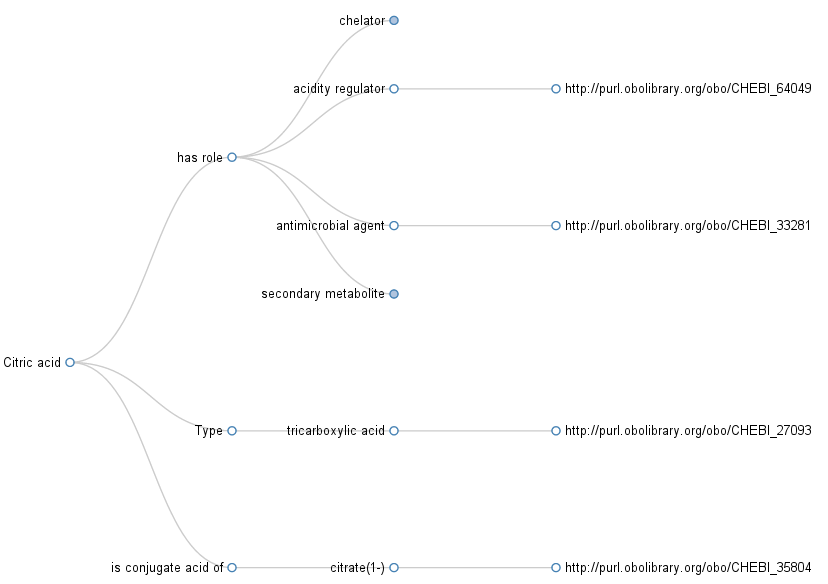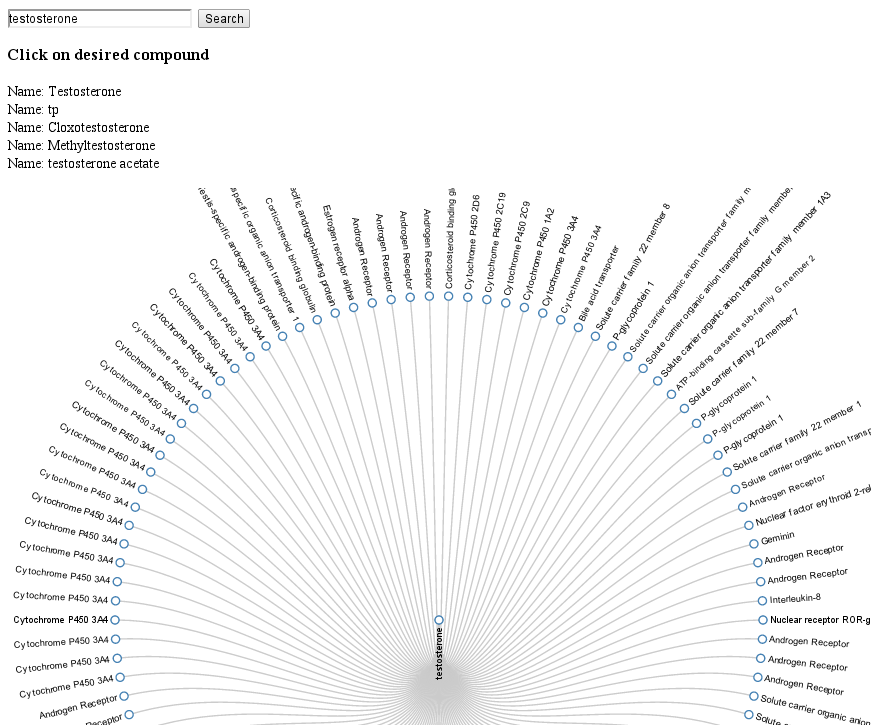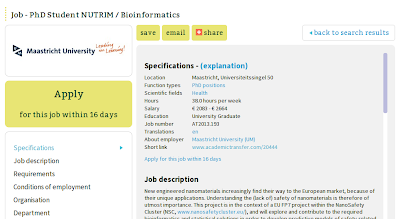-
Elsevier's new text mining initiative is a step sideways
Elsevier’s new ideas on text mining are getting a lot attention now. Sadly, they get it wrong, again. On the bright side, all other publishers, which are expected to follow this year, can learn from this mistake. -

Programming in the Life Sciences #13: Another screenshot
I got a one more source code zip file from the Maastricht Science Programme students (see also the first two screenshots). Vincent and Błażej extended the d3.js tree view, showing classification information from ChEBI (they also submitted three patches to the Open PHACTS ops.js): -

Programming in the Life Sciences #12: First screenshots
Yesterday was the last Programming in the Life Sciences practical day, and the 2nd and 3rd year B.Sc. MSC students presented their results yesterday afternoon. I am impressed with the results that they reached in only six practical days. I have suggested them to upload the presentations to SlideShare or FigShare (with the advantage that you get a DOI), and asked them to send them their tools. Below are some screenshots. -

Looking for a PhD and a Postdoc to work on Open Science Nanosafety
I am happy that I got my first research grant awarded (EU FP7), which should start after all the contracts are signed, etc, somewhere early 2014. The project is about setting up data needs for the analysis of nanosafety studies. And for this, I have the below two position vacancies available now. If you are keen on doing Open Science (CDK, Bioclipse, OpenTox, WikiPathways, …, …), working within the European NanoSafety Cluster, and have an affinity with understanding the systems biology of nanomaterials, then you may be interested in applying. -
Programming in the Life Sciences #11: HTML
HTML (HyperText Markup Language), the language of the web, is no longer the only language of the web. But it still is the primary language in which source code of webpages is shared. Originally, HTML pages were always static: the only HTML source of a web page was that was downloaded from a website. Nowadays, much HTML the is visualized in your web browser, is generated on the fly with JavaScript. In fact, that is exactly what you will learn to do in this course. -
Programming in the Life Sciences #10: JavaScript Object Notation (JSON)
As said, JSON is the format we will use as serialization format for answers given by the Open PHACTS LDA. The API actually supports XML, RDF, HTML, and TSV too, but I think JSON is a good balance between expressiveness and compactness. Moreover, and perhaps a much better argument, JSON works very well in a JavaScript environment: it is very easy to convert the serialization into a data model: -
Programming in the Life Sciences #9: APIs and Web Services
Continuing on the theory covered in this course, this part will talk about application programming interfaces (APIs) and web services.